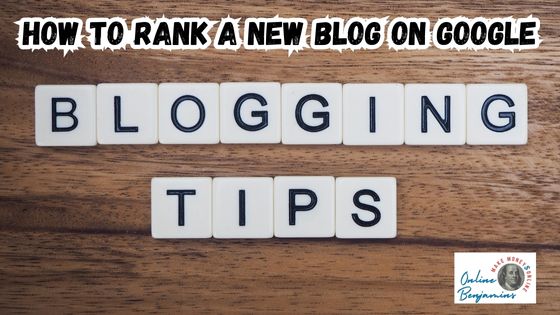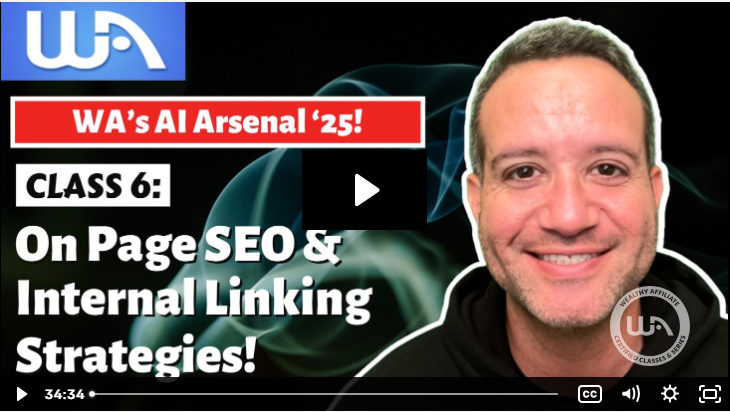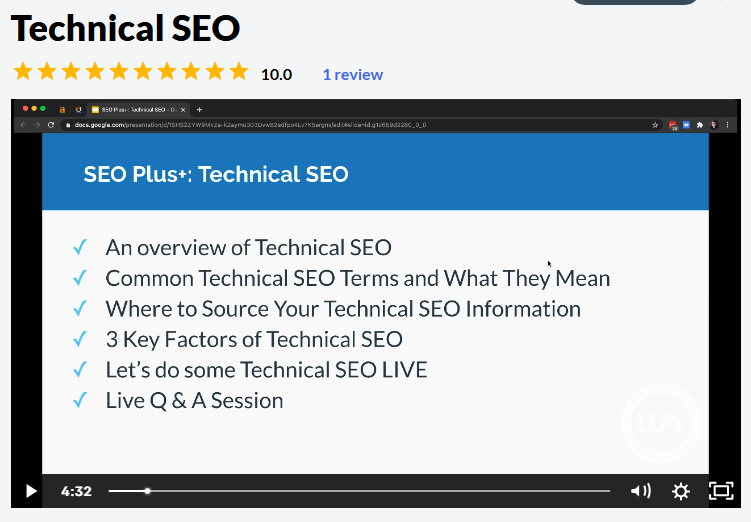Building a successful blog in 2025 means taking a careful, step-by-step approach to satisfy both readers and search engines. A blog that ranks on Google centers around valuable content and solid technical practices, and a clear plan can grow your new blog into a trusted resource over time.
Starting a new blog may feel challenging, but sticking to strategies that favor high-quality content and smart optimization makes the journey more manageable. In this guide, I share a step-by-step blueprint covering how to create quality content, tweak your pages for search engines, promote your site, and adjust when search engines change their algorithms.
QUICK LOOK: Steps to Rank a New Blog on Google in 2025 and Beyond
- Create High-Quality Content: Your content is the foundation of your blog. I believe every piece should be written with readers in mind, ensuring that it not only meets their needs but also signals to Google that your blog offers genuine value.
- On-Page SEO Fundamentals: On-page SEO lays the groundwork for your blog’s visibility. I focus on including key elements so search engines can understand and deliver my content to the right users.
- Develop Off-Page SEO Strategy: Strengthening off-page SEO helps build a supportive network around your blog. Combining quality content with a smart off-page approach steadily pushes your rankings higher.
- Create an Excellent User Experience: Focusing on user experience creates a positive, engaging environment. When visitors spend more time on your blog, they are more inclined to return, and search engines notice these signals.
- Don’t Overlook the Technical Details: Technical details, like site speed, mobile-friendliness, and site security, have a big impact on rankings. Technical excellence works hand in hand with quality content when it comes to gaining higher rankings.
- Monitor and Adapt: Google’s algorithm is always evolving. It’s important to keep up with changes and adjust your strategies accordingly to maintain steady growth in rankings.
This guide assumes you are ready to roll up your sleeves, learn practical techniques, and build a blog that captures Google’s attention. Every step can be adapted to suit your niche and audience.
Step 1: Create High-Quality, User-Centric Content
Your content is the foundation of your blog. I believe every piece should be written with readers in mind, ensuring that it not only meets their needs but also signals to Google that your blog offers genuine value.
Focus on What Your Readers Need
- Answer questions your target audience is asking.
- Address common problems with actionable advice.
- Create original content that stands apart from generic posts.
Keep Your Content Fresh
- Update articles regularly to reflect the latest trends.
- Show search engines your site remains current with occasional new posts.
- Repurpose older posts by adding updates or new perspectives.
By establishing a solid content schedule that considers these points, you position your blog to serve your audience well and gradually improve its reputation on Google.
Step 2: Optimize On-Page SEO Fundamentals
On-page SEO lays the groundwork for your blog’s visibility. I focus on including key elements so search engines can understand and deliver my content to the right users.
Key Practices to Consider
- Keyword Placement: Place relevant keywords naturally in your titles, headings, and throughout your text.
- Clear Headings: Use descriptive headings to break up text and help both readers and search engines spot important sections.
- Meta Descriptions: Write concise meta descriptions that summarize your article and encourage clicks.
- Internal Linking: Link to related posts and pages to improve site navigation and reveal the structure of your blog.
Other Optimizations
- Break up content with bullet points and short paragraphs so it is easy to scan.
- Provide alt text for images to clarify visuals for search engines.
- Review your blog’s code occasionally to fix errors and improve crawlability.
These on-page details contribute to forming a framework that search engines understand, which is very important for achieving higher rankings over time.
Step 3: Develop a Strong Off-Page SEO Strategy
While on-page SEO is essential, off-page efforts further boost your blog’s ranking. I’ve learned that a solid off-page strategy builds trust and credibility with both readers and search engines.
Building Quality Backlinks
- Earn backlinks from respected sites in your niche; these links work like endorsements for your content.
- Engage with fellow bloggers and influencers to expand your network.
- Consider writing guest posts or collaborating on projects that introduce your blog to a broader audience.
Boosting Your Blog’s Presence
- Social Media Sharing: Share your posts on platforms to increase visibility. A strong social signal can drive traffic to your site.
- Online Directories: Submitting your blog to directories makes it easier for search engines to discover your site.
- Use Tools: Regularly check your blog’s performance with Google Search Console to get clear insights and spot any issues.
Strengthening off-page SEO helps build a supportive network around your blog. Combining quality content with a smart off-page approach steadily pushes your rankings higher.
Step 4: Step up the User Experience (UX)
Offering an excellent user experience keeps readers returning to your blog. I watch closely how visitors interact with my content and design my site with straightforward, simple navigation.
Ways to Improve UX
- Easy Navigation: Structure your blog so readers can quickly find what they need without getting lost. A clear menu and simple labels help a lot.
- Readability: Use plain language and short paragraphs; headings and bullet points help readers digest the information fast.
- Engaging Calls to Action: Invite readers to subscribe, comment, or share your content. A direct CTA guides them to the next step without confusion.
- Reduce Bounce Rates: Ensure your page loads quickly and works well on mobile devices. A smooth experience makes it less likely that visitors will leave immediately.
Focusing on user experience creates a positive, engaging environment. When visitors spend more time on your blog, they are more inclined to return, and search engines notice these signals.
Step 5: Ensure Technical Excellence
Technical details have a big impact on rankings. I make sure that all technical aspects of my blog meet modern standards and perform well on all devices.
Key Technical Factors
- Site Speed: Compress images and use tools to speed up load times. A fast site keeps visitors happy.
- Mobile-Friendliness: Confirm that your design is responsive; Google favors sites that work well on mobile.
- Secure Protocols: Use HTTPS to protect user data and build trust with your visitors.
- Crawlability: Ensure your site’s structure is clear for search engine bots. A neat sitemap and clean code let search engines index your content efficiently.
By fixing these technical aspects, I guarantee my blog offers a smooth and secure experience. Technical excellence works hand in hand with quality content when it comes to gaining higher rankings.
Step 6: Monitor and Adapt to Algorithm Updates
Google’s algorithm is always evolving. I know it’s important to keep up with changes and adjust my strategies accordingly to maintain steady growth in rankings.
Staying Current with Trends
- Keep Informed: Follow reliable industry news and search engine blogs so you can prepare before changes affect your traffic.
- Focus on Quality: Even when updates roll out, consistently high-quality blogs get favorable treatment—so keep producing valuable content rather than chasing quick fixes.
- Be Patient: Ranking improvements take time; a steady plan that blends content upgrades with technical optimization eventually pays off.
Measuring Performance
- Monitor your site with analytics tools to catch traffic shifts.
- Watch changes in user engagement to decide if updates are needed.
- Regularly check your keyword rankings and tweak your strategy as required.
This ongoing review and readiness to adjust keeps your blog relevant as the digital landscape shifts.
Common Questions & Troubleshooting
What should I do if my blog is slow to rank?
It can take time for Google to notice effort. Make sure your content is engaging and both your on-page and technical SEO are in order. Patience and steady tweaks typically lead to gradual growth.
How can I address technical issues that might hurt my rankings?
Regularly test your site’s speed and mobile responsiveness.
Use webmaster tools to spot crawl errors.
Fix broken links and other issues that could harm user experience.
What if my niche is highly competitive?
Competing in popular niches means extra effort. Focus on quality content that answers specific questions and offers unique perspectives. This focused approach can help you reach an audience that larger sites might miss.
Final Thoughts & Next Steps
Ranking a new blog on Google in 2025 is a multi-layered process involving content quality, technical soundness, and smart promotion. I believe the techniques shared here offer a practical roadmap for building a blog that meets the demands of both readers and search engines. With dedication, attention to detail, and a flexible strategy, you can build a lasting presence on Google.
KEY TAKEAWAYS: Your Blog Ranking Action Plan
- Plan content that directly answers your readers’ questions and provides valuable guidance.
- Implement essential on-page optimizations like natural keyword use and a clear page structure.
- Work on earning quality backlinks and share your posts on social media to boost off-page signals.
- Test your blog’s speed and responsiveness, and address any technical issues quickly.
- Monitor changes in search algorithms and adjust your strategies as needed.
- Set both short-term and long-term goals and review your performance regularly.
Steady progress is the key to success. One well-crafted post today can be more effective than many rushed articles. Keep refining your approach with feedback and performance data, and soon, your blog will earn the recognition it deserves from both readers and search engines.
What step will you take first? I encourage you to choose one area to improve and let your progress build naturally. Consistency and attention to detail really do make a difference over time. If you would like to learn more and are serious about ranking a new blog on Google in 2025, I recommend you grab a FREE STARTER Membership at Wealthy Affiliate. It’s the platform I have been using for over six years, and you can learn blogging, SEO, online business, and much more. Try the free membership and see for yourself, and then decide if it’s for you or not.
Check Out Our Most Recent Articles:
- Creating A Personal Vs. Business Brand: Which Is Right For You?

- 7 ways to Use AI to Personalize Marketing Campaigns in Online Businesses

- 5 Essential Steps To A Strong Brand Identity

- 5 Steps to Automating Online Business Operations With AI

- The Role Of Machine Learning In Predicting Consumer Behavior

- 5 Tips on How To Use Data Analytics To Drive Your Content Marketing

Wish you Much Success in Growing Your Blog,

- onlinebenjamins.com
- thebeachangler.com
- thesinnerinthemirror.com
- Facebook: Online Benjamins
- Twitter: @onlinebenjamin1
- Instagram: dotcomdinero
- YouTube: Online Benjamins
Rex
P.S. Again, Wealthy Affiliate is COMPLETELY FREE to get started. No catch, no obligation, no bait and switch. I will personally be in touch with you upon joining to offer my support and guidance to help you get up and running online.
P.P.S. If you have any questions or are unsure of anything, I am here, and I promise I will get back to you on all of your questions and comments. Just leave them below in the comment section. Follow me on Twitter: @onlinebenjamin1, Instagram: dotcomdinero, and Facebook: Online Benjamins.
Hi,
Thanks for stopping by and congratulations for taking the first steps to building your own online business. I’ve been in business both offline and online since 1997. I would consider it an honor to help you build your business. Father of 3, life long outdoorsman with an education in Genetics and Economics. This site is about cutting through the BS and finding the real opportunities in the online world. I look forward to working with you.





